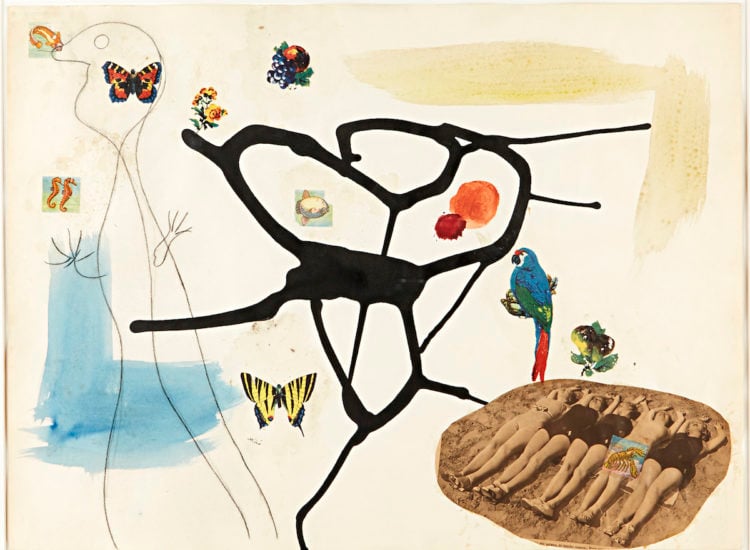In a world in which digital cut and paste has become a daily, pedestrian act for many, is collage still alive, and relevant as a genre? The latest exhibition at Luxembourg & Dayan, titled “The Ends of Collage,” seeks to find answers to this question, exploring both the technical aspects of the medium as well as its historical and artistic legacy.
Curated by art historian and collage expert Yuval Etgar, and featuring an A-list roster of artists—including Joan Miró, Jean Arp, Max Ernst, Francis Picabia, Barbara Kruger, Richard Prince, Linder, Lee Krasner, Louis Nevelson, and John Stezaker—the show is currently on view at the New York and London branches of the gallery.
“In a time where the term ‘cut and paste’ refers more often to allegorical and digital operations than to the use of scissors and glue, it seems imperative to go back and examine the technical invention that lies on the historical seam between pictures and images, between manual craft and the mediated reality of our time,” said Etgar of the exhibition, whose tantalizing title can also be read as a nod to the hackneyed “death of painting.”
The London show focuses on key themes associated with collage as a medium, such as fantasy, the domestic sphere, dismemberment of the social or private body, and the mobility of images. Meanwhile, the New York show explores the technical aspects of collage, which run the gamut from cuts, masks, windows, and image manipulations, to the notion of “edge.”
The gallery has also produced a reader, edited by Etgar, that explores the multiple theoretical frameworks that led to the emergence of collage in the beginning of the 20th century and its the resurgence in the late 1970s.
The publication features seminal texts on the medium by critics, writers, and artists including Clement Greenberg, Louis Aragon, Max Ernst, Hannah Höch, Douglas Crimp, Benjamin H. D. Buchloh, and Martha Rosler.
“The Ends of Collage” is on view at Luxembourg & Dayan New York from February 27 – 15 April 15, 2017 and at Luxembourg & Dayan London from March 10 – May 13, 2017.
